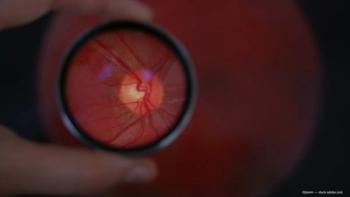
Wavefront-guided LASIK better than conventional, but why?
Wavefront-guided LASIK yields more accurate corrections and better quality of vision compared with conventional LASIK regardless of which laser system is used, said Robert K. Maloney, MD, at the American Academy of Ophthalmology refractive surgery subspecialty day meeting in New Orleans.
Taking a counterpoint view, Jack T. Holladay, MD, MSEE, FACS, did not dispute that wavefront-guided treatments provide superior results. However, he maintained that the benefits achieved have nothing to do with wavefront guidance but rather reflect other wavefront-independent changes that have been made over time in the laser systems.
In support of the viewpoint that wavefront-guided ablation is the key to superior visual outcomes, Dr. Maloney compared results from FDA clinical trials for the Alcon, Bausch & Lomb, and VISX wavefront-guided systems to the last FDA approvals for conventional LASIK to treat low-to-moderate myopia.
Wavefront-guided results In comparing conventional and wavefront-guided LASIK performed with Alcon systems, the results consistently favored the wavefront-guided treatment whether analyzing proportions of patients achieving 20/20 uncorrected visual acuity (UCVA) (86% versus 64%), losing 2 lines of best spectacle-corrected visual acuity (BSCVA) (0% versus 1.2%), or complaining of night-driving difficulties (≤10% versus 30%).
For the Bausch & Lomb lasers, there was still a benefit for the wavefront treatment, although the difference at least in UCVA outcomes was less marked relative to the other manufacturers. In the Bausch & Lomb trials, 87% of patients treated with conventional LASIK achieved UCVA of 20/20 compared with 92% of patients undergoing wavefront-guided treatment. The rate of BSCVA loss of 2 lines was cut in half with the wavefront-guided approach from 1.1% to 0.6%, and about twice as many wavefront-guided patients compared with conventional LASIK patients reported improved night driving, 40% versus 22%.
Recognizing that the comparisons of wavefront-guided and conventional LASIK he made may be criticized on the basis that the results for the conventional treatments are from studies using outdated lasers that are 3 to 4 years old, Dr. Maloney presented results from a study comparing the conventional laser treatment using the best available laser against wavefront. That trial, undertaken by Capt. Steve Schallhorn, MD, was done using a VISX laser and included 50 patients undergoing wavefront treatment and 500 eyes in the conventional LASIK group treated with a 6.5-mm optical zone and 8-mm ablation zone.
Its results still favored the wavefront treatment. Rates of UCVA 20/20 or better were 98% for the wavefront treatment compared with 91% for the conventional laser, and while both groups showed a gain in BCVA at 3 months, the improvement was greater in the wavefront group. In addition, analyses of visual symptoms revealed a higher proportion of patients treated with conventional LASIK experienced an increase in halo complaints.
Newsletter
Don’t miss out—get Ophthalmology Times updates on the latest clinical advancements and expert interviews, straight to your inbox.








































